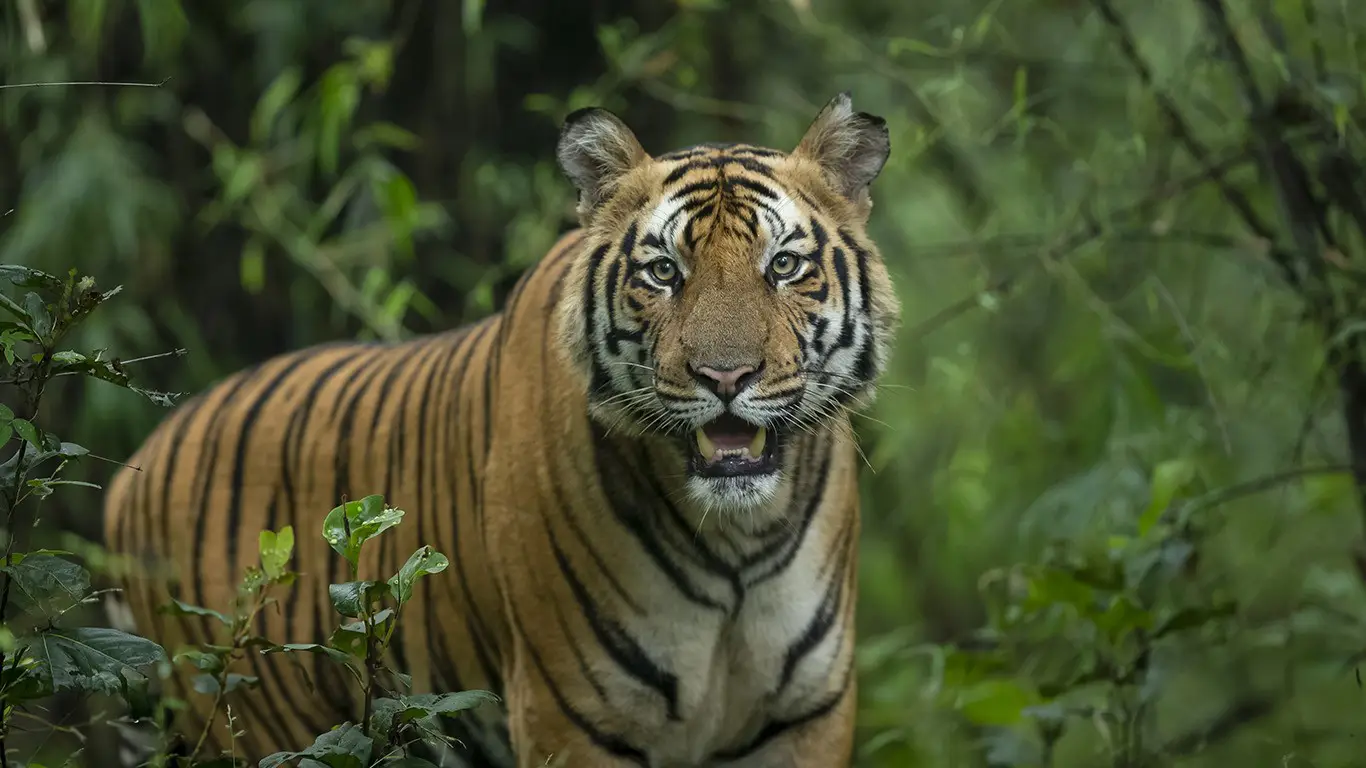India is one of the few places in the world where you can still see the Royal Bengal Tiger in its natural habitat. With over 3,000 tigers roaming the forests, India offers unmatched opportunities for wildlife enthusiasts and photographers. A tiger safari in India is not just a holiday—it’s a thrilling journey into the wild, where every rustle in the bushes could reveal the striped king of the jungle.
Why Choose a Tiger Safari in India?
India is home to more than 70% of the world’s wild tiger population, making it the best destination for tiger safaris. The country’s diverse ecosystems—from dry deciduous forests to lush mangroves—support a wide range of wildlife. Unlike other destinations, here you get both excellent chances of spotting tigers and the cultural richness of nearby towns, villages, and historic landmarks.
A tiger safari in India is not just about the big cat; it’s about experiencing the entire ecosystem—listening to the alarm calls of deer, watching monkeys leap across treetops, or spotting peacocks in full display.
Best National Parks for Tiger Safaris in India
1. Ranthambore National Park (Rajasthan)
One of the most popular destinations, Ranthambore is known for its bold tigers and ancient fort ruins. The open landscapes make sightings frequent and ideal for photographers.
2. Bandhavgarh National Park (Madhya Pradesh)
With one of the highest tiger densities in India, Bandhavgarh offers excellent chances of sightings. The park’s historic fort adds to its charm.
3. Kanha National Park (Madhya Pradesh)
Famous as the inspiration for The Jungle Book, Kanha is rich in biodiversity and known for its open meadows and sal forests, making tiger viewing easier.
4. Jim Corbett National Park (Uttarakhand)
India’s first national park, established in 1936, Jim Corbett is perfect for combining tiger safaris with sightings of elephants, leopards, and hundreds of bird species.
5. Tadoba Andhari Tiger Reserve (Maharashtra)
Less crowded but highly rewarding, Tadoba is loved by serious wildlife enthusiasts for its high chances of tiger sightings.
6. Sundarbans National Park (West Bengal)
This UNESCO World Heritage Site is famous for its unique mangrove ecosystem and the elusive “swimming tigers.”
Best Time for a Tiger Safari in India
- October to February: Pleasant weather, lush forests, great for photography.
- March to June: Hot season, but the best time to see tigers at waterholes.
- July to September: Monsoon season—many parks remain closed.
If your main goal is tiger sightings, the summer months are the most rewarding despite the heat.
What to Expect on a Tiger Safari
A typical tiger safari in India starts early in the morning or late in the afternoon. Visitors board jeeps or canters, accompanied by guides and naturalists who track tigers using pugmarks, calls of prey animals, and experience. Patience is essential—sometimes the forest reveals a tiger within minutes, while other times the wait builds suspense until a majestic striped figure emerges from the trees.
Apart from tigers, you’ll encounter spotted deer, langurs, jackals, wild dogs, and countless bird species. Every safari is different, ensuring each trip feels like a new adventure.
Tips for First-Time Safari Visitors
- Dress smartly: Wear earthy colors like green, brown, or beige to blend into the forest.
- Carry the essentials: Binoculars, a camera with zoom lens, water, and sunscreen.
- Stay quiet and patient: Tigers are shy creatures; silence increases your chances of sightings.
- Respect wildlife: Never litter, feed animals, or step out of the vehicle without permission.
Costs and Booking Information
The cost of a tiger safari in India depends on the park, season, and type of vehicle.
- Jeep Safaris: ₹2,500–₹5,000 per jeep (shared by six people).
- Canter Safaris: Budget-friendly, larger vehicles for 15–20 people.
- Luxury Safaris: Premium packages with private jeeps, naturalists, and luxury lodges.
Permits are limited and must be booked in advance, often 60–90 days before your trip.
Conservation and Responsible Tourism
Tiger safaris in India play a crucial role in conservation. Tourism generates funds for local communities and park management, ensuring forests remain protected. Programs like Project Tiger have helped the Bengal tiger population recover from near extinction.
As a responsible traveler, choosing eco-friendly lodges, respecting park rules, and supporting local communities ensures your safari has a positive impact.
Conclusion: Experience the Call of the Wild
A tiger safari in India is an unforgettable journey into the heart of nature. Watching a Bengal tiger emerge from the forest, its golden coat glowing in the sun, is a moment that stays etched in memory forever. Whether you are a wildlife photographer, a family traveler, or simply an adventurer at heart, India’s tiger reserves offer a unique blend of thrill, beauty, and cultural richness.
If you are ready to witness the king of the jungle in its true kingdom, plan your tiger safari in India—it’s not just a trip, but an experience of a lifetime.
